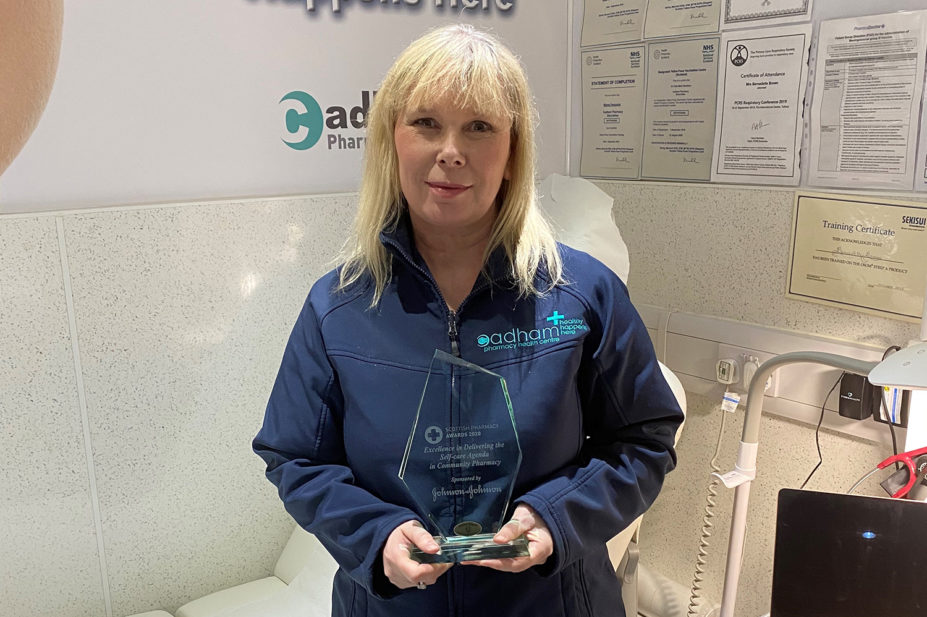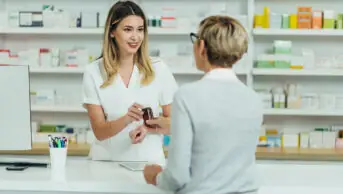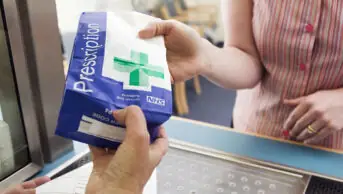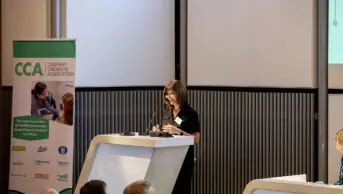
Bernadette Brown
Becoming an independent prescriber has enabled Bernadette Brown to transform her pharmacy, which now offers a range of NHS services. Brown sees many patients with minor ailments, as well as managing prescriptions and appointments through an app.
The Cadham Pharmacy in Glenrothes, Fife, describes itself as a clinical hub and was one of the first in Scotland to offer such a range of services.
Much of that is owing to Brown, who is now extending the pharmacy into a unit next door and hoping to employ additional staff, including another independent prescriber.
I saw him a month later and he said it had transformed his life
She qualified as an independent prescriber in 2009 after first practising as a supplementary prescriber in a GP surgery and seeing the difference her pharmaceutical knowledge could make to patients’ lives. One memorable patient was a taxi driver at risk of losing his job because of the side effects of the older-style blood pressure pills he was on. With approval from the doctor, she moved him onto newer tablets, which had less of a diuretic effect, meaning fewer interruptions to his everyday life. “I saw him a month later and he said it had transformed his life,” she recalls. “His blood pressure was fine and he was no longer worrying about losing his job.”
After becoming an independent prescriber, the work of transforming the Cadham Pharmacy into a clinical hub offering “Pharmacy First” services began. She started providing many of these under a service level agreement with NHS Fife and, in 2020, moved onto the newly-introduced Pharmacy First framework.
Unlike many community pharmacies, Cadham Pharmacy sells only a limited range of products, with a focus on those that are for clinical conditions.
Brown sees a wide range of patients in the clinic room, either as walk-ins or as booked appointments. Many she will be able to resolve on the spot — with or without a prescription — while others will be referred onto a local GP or even require more urgent attention.
People are coming to us first because they are finding it difficult to access care
“People are coming to us first because they are finding it difficult to access care,” she says. Some patients are directed to the pharmacy by local GPs; recently, she saw a woman with oxygen SATS of below 90%, who was struggling to breathe and had a previous history of pulmonary embolism. She ended up being taken to hospital by paramedics but not before Brown, who spent over an hour and a half with her, had engaged with her around her depression and discovered she was a talented card maker. The woman is now going to set up a card making club for the charity Brown has created to tackle loneliness and isolation in the local community.
Brown has no doubt that the different healthcare professions can learn from each other, having trained alongside a nurse practitioner. “I felt I could learn a lot from her — about safety netting, about how to get the best information [from patients],” she says. Now the pharmacy often hosts other healthcare professionals keen to see how it works, including medical students.
We never turn people away
What she has done has meant taking risks, she concedes, but she had a firm vision of working in a way which would benefit the public. “We never turn people away,” she says. She is also able to give more time to patients than the traditional 10 minutes for a GP appointment — her shortest consultation is 15 minutes and she will often spend 30 minutes with a patient.
“The best advice I can give is that, for community pharmacists, the role is minor illness triage,” she says. “99% is action and treatment. 1% is refer.”
Quick fire questions
- How many prescriptions do you write? “Five to ten prescriptions a day.”
- Do you do more prescribing or deprescribing? “Nearly always new prescriptions but I do change prescriptions for some asthma patients under a shared-care scheme.”
- Any regrets about qualifying as an independent prescriber? “None.”
- Favourite time of the day? “Being in my treatment room, I get to chat and know my customers. I see this as a bit like the old family doctor.”
- How do you destress? “I go on holiday. I have a beautiful family. I am looking to drop a day or two a week when the new unit is up and running.”
- What makes your heart sink? “My heart sinks when people are rude to my team. They work very hard and someone thinks it is okay to be rude and kick off at them.”
- What makes your heart sing? “When someone comes and hugs me in the pharmacy.”
Click here to return to ‘Meet the prescribers: pharmacists transforming care for patients’


